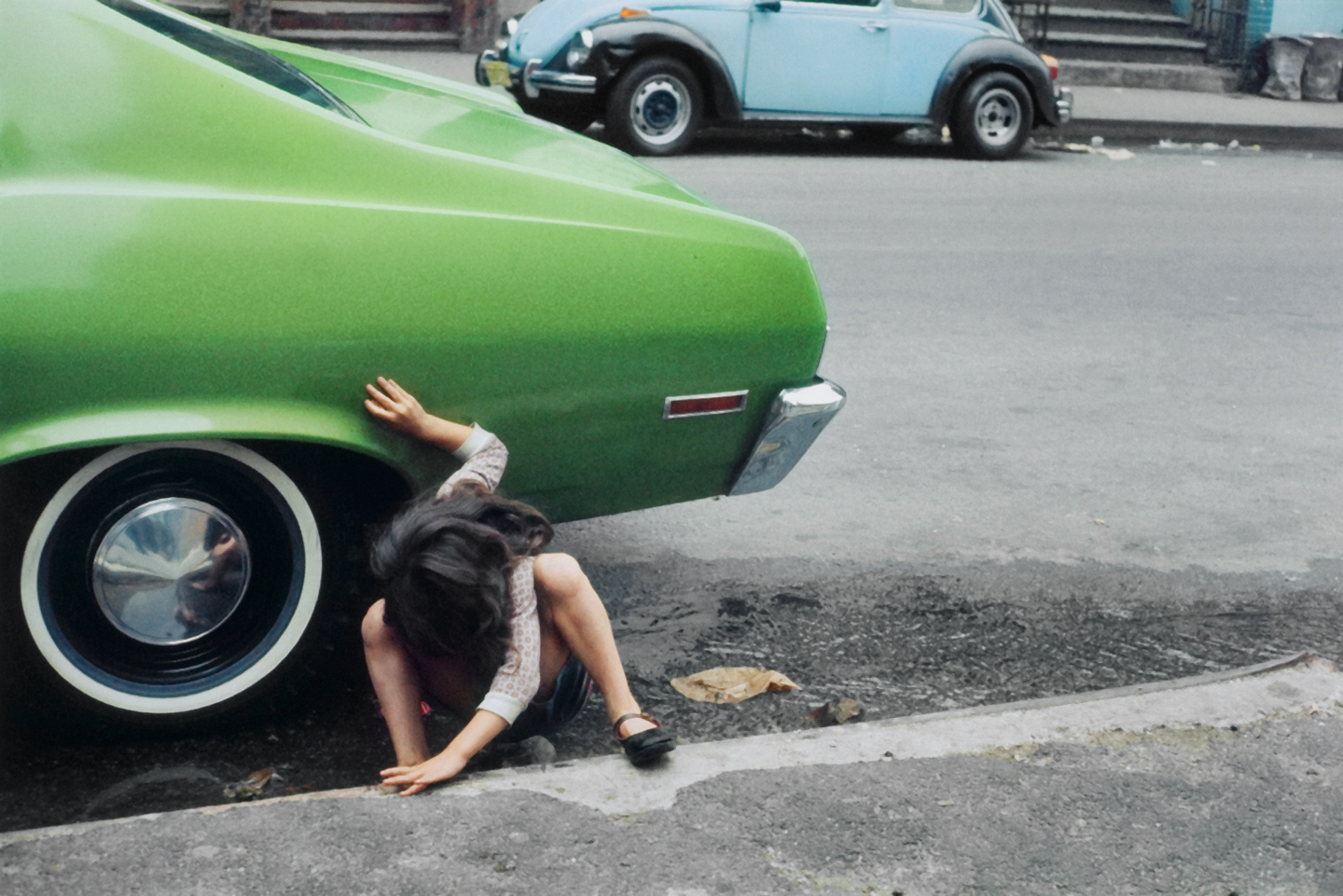Street photography is more than just a photographic genre, it’s a visual language that captures fragments of everyday life, transforming ordinary moments into extraordinary images. Emerging alongside the development of lightweight cameras and evolving throughout the 20th century, street photography has been shaped by photographers with a keen eye for interpreting society through an ironic, poetic, or candid lens.
From the pioneers who explored the chaotic rhythm of cities to contemporary masters who reinterpret urban space with modern sensitivity, the history of street photography is rich with stylistic and technical innovations. In this article, we will explore the work of ten photographers who left an indelible mark, influencing generations of artists and redefining the way we see the world through the lens.
Helen Levitt: The Poetess of New York’s Streets
Birth: August 31, 1913, Bensonhurst, New York, United States
Death: March 29, 2009, Greenwich Village, New York, United States
Helen Levitt captured the streets of New York with a unique sensitivity, revealing the city’s true soul through images that seem like fleeting fragments of life stolen from time. Spontaneous gestures, children’s games, and everyday scenes all transform into visual storytelling.
One of the most intriguing episodes of her career revolves around her fascination with children’s graffiti. In the 1930s, while exploring Harlem with her Leica, Levitt was captivated by the drawings children scribbled on walls. She decided to document them, creating a series of images that today serve as a valuable testament to the spontaneous creativity of that era. This project caught the attention of Henri Cartier-Bresson, who became one of her mentors and encouraged her to further develop her unique style.
In the 1940s, Levitt also ventured into filmmaking, collaborating with directors like Luis Buñuel to produce documentaries that shared the same poetic essence as her photographs. However, it was her transition to color photography in the 1950s and ’60s that marked a turning point in her career. Using Kodachrome film, Levitt infused her images with emotional depth, adding a layer of nuance to her street photography. Unfortunately, a significant portion of her color work was lost due to a burglary in her apartment in 1970, depriving the history of photography of an invaluable collection.
Despite this setback, Levitt never stopped photographing and continued her work well into old age, preserving her ability to observe the world with a keen and curious eye. In the 1970s she created a series of photographs in the New York subway, discreetly capturing passengers lost in thought, fleeting glances, and intimate moments stolen amidst the chaos of the train cars. This lesser-known body of work showcases her extraordinary talent for observing and documenting humanity in confined spaces, where expressions and interactions become more intense and authentic.
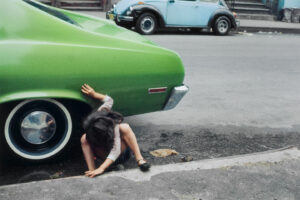
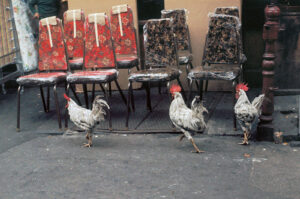



All photos © Helen Levitt
Lee Friedlander: The Architect of Visual Chaos
Birth: July 14, 1934 (age 90), Aberdeen, Washington, United States
Lee Friedlander transformed street photography into an intricate play of visual compositions, reflections, and overlapping elements. While other photographers sought to isolate subjects with elegance and precision, Friedlander embraced the disorder of the city, constructing images rich with details that challenge the eye to explore every corner.
A defining moment of his career came in the 1960s when he was commissioned to create an iconic photograph of New Orleans. Rather than opting for a classic view of the French Quarter or the Mississippi River, he captured a lamppost awkwardly standing in the foreground, almost obstructing the scene. This subversive approach exemplifies his style: Friedlander didn’t seek conventional beauty, but rather the hidden geometries within urban chaos.
Renowned for his unconventional self-portraits, Friedlander often inserted himself into scenes through shadows and reflections, making himself an anonymous part of the cityscape. His book Self Portrait (1970) features his face distorted in mirrors, shop windows, and elongated silhouettes on the pavement, illustrating how even the photographer can become an invisible element within the urban environment.
His images resemble visual labyrinths, with street signs, metal grates, branches, and billboards overlap to create a sense of layering and depth. His series America by Car saw him traveling across the United States, photographing the landscape from inside his car, using windows and mirrors as compositional tools.
Friedlander reinvented the language of street photography by showing that urban chaos is not an obstacle, but a creative resource. His vision teaches us that the apparent disorder of cities can be transformed into a unique visual harmony when observed with curiosity and precision.

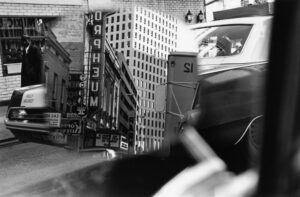
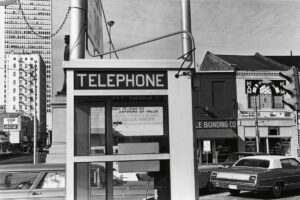
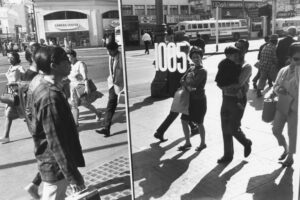
All photos © Lee Friedlander

